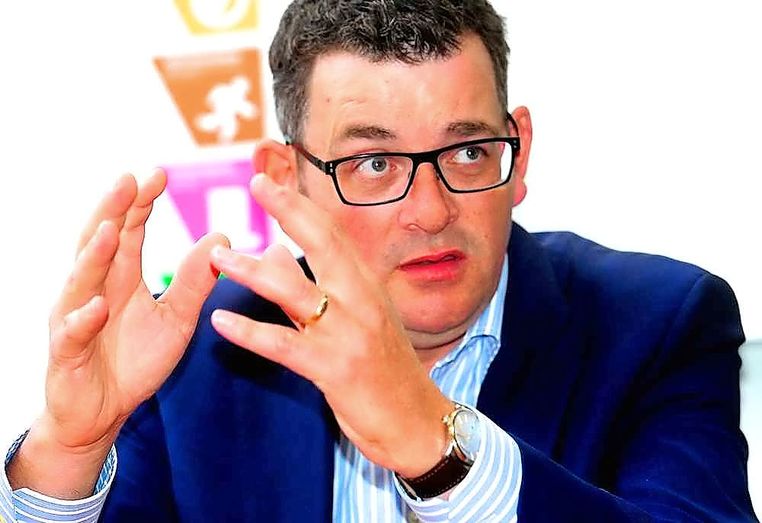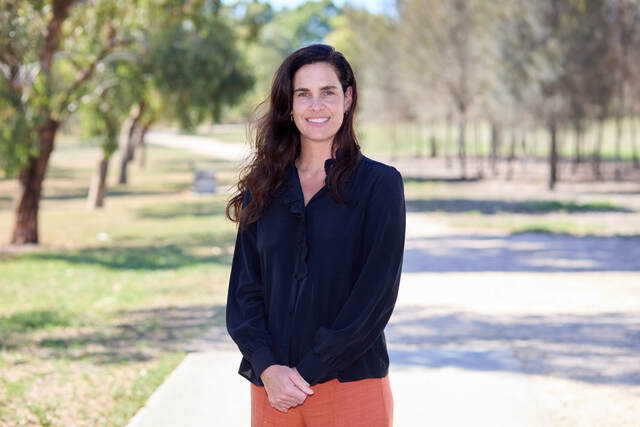The Labor Party has spent the past three years running the state. But come November, will they be re-elected? Charlene Macaulay sits down with Premier Daniel Andrews to find out about his plans for the western suburbs.
What do you consider to be the biggest issues facing the western and northern suburbs, and what will you do to address those issues if re-elected?
I think the biggest issue in the western and northern suburbs, and indeed, right across the state, is jobs. Without employment, everything else in life gets really hard, that’s why we’ve worked so hard every single month that we’ve been in office to create the best part of 330,000 jobs. Whether it’s through our own infrastructure projects – the West Gate Tunnel, the City-Tulla widening project … the $1.8 billion in local [Wyndham] roads, school projects like this one ($3.3 million for a new kindergarten built between Sunbury Heights and Sunbury Downs College), hospital projects – there’s a long, long list. They all contribute to the number of people that are in work, and they help to set the tone and set some momentum up for us. We’re seeing the housing boom, we’re seeing really strong fundamentals in the Victorian economy and that means more people are getting into work, they’re staying in work – we’ve got the highest participation rate we’ve seen for a long time, the highest female participation rate we’ve perhaps ever seen – that’s very, very good.
We’re not without our challenges, of course, and that’s why we’ll keep investing in more schools, kinders as well as continuing to repair the damage that was done to our TAFE system … and continuing that infrastructure – road and rail. There is a role for government to play in underpinning demand, underpinning confidence, and sending the clearest message to the rest of the
world that Victoria is a place where things are happening, and that’s what we’ve tried to do these last three years.
Wyndham’s population has officially outgrown that of Geelong and is now the second biggest LGA in the state. The council has called on the state government to create a new region, called the Wyndham, Avalon and Geelong City-Rural Region. Is this something the state government is willing to do?
We’re always happy to work with our friends and partners in local government to try and address some of these issues. I’ve seen some media coverage of that particular proposal, I’m sure the minister for local government and other ministers in the government have perhaps had more detailed discussions. When you think about the growth that’s occurring out here, the baby boom, the people that are moving in to the local community, the fact that we’re living longer … that’s a vote of confidence in the fact that Victoria is a great place. I remember the 1990s when people couldn’t get out of here fast enough – we don’t want to go back to that. You’ll always get some people who are critical of growth, but the alternative is not very good.
There’s a lot of people who talk about managing growth, and then there are other people who just get on and build the projects that we need to build – more schools, more hospitals, better local roads, better transport connections … and a much better public transport system. Investing in skills, investing in bringing new business to the state, and developing up new sectors. I’ve been much more focused on the latter over the last three-and-a-half years.
In light of this growth, and keeping in mind that Wyndham’s population is expected to grow by a further 74.2 per cent by 2036, what can the area expect from the 2018-19 budget?
You can expect us to keep on building, keep on building roads, rail, hospitals, schools, and investing in the skills that underpin jobs. That’s what’s most important, that’s what we’ve done every day we’ve been in office, and that’s what we’ll continue to do.
We have not wasted any time. I don’t think even our harshest critics could possibly say that we hadn’t got on and got a fair bit done. There are so many projects that are underway now, things that have been talked about for a long time, we’re actually in the process of delivering them. And when these projects are finished, the next ones will be ready to start – in fact, they will
have already started, because we’re doing the planning for those now.
Some people like to say a lot of things about their plans for managing growth, but the real question is this: if population growth was so important, why would you (the Liberals) spend four years doing nothing? If planning was so important to you, and you had the opportunity to be the planning minister … (you’re saying) all of our problems have occurred in the last three years, none of it’s down to a previous government. I don’t make excuses, I just get on and get things done. And that’s what I think people in the west and the north, and indeed, right across Victoria, want. They want a government that works as hard as possible to actually deliver. I think that’s the government I lead. The four years beforehand? Not very much happened. And that can’t be good for managing the pressures, the challenges that some people pretend to be very concerned about now.
The western suburbs have long held a reputation for being Labor’s heartland, but many residents now fear that the west has missed out on much-needed funding because they do not live in marginal seats. What do you say to this?
Firstly, it is true to say that over the years we have often been in the receipt of very strong support in the west of Melbourne and north of Melbourne, and I’m very grateful for that. To suggest, however, that we’ve not invested, or that somehow we’ve not sought to govern for every single Victorian is simply wrong.
I’ve visited Sunshine Hospital many, many, many times and I’m happy and proud to have been closely associated with rebuilding large parts of that hospital, and the Joan Kirner Hospital for Women and Children will open later on this year – only a Labor government builds hospitals, simple as that. The budget will have more to say about supporting better health outcomes in the west. I’ve had the great privilege of being at the Werribee Mercy Hospital, I know many of the team out there very well, I’ve been there dozens of times. (They’ve had) very significant support to make that a bigger and better hospital.
I’ve lost count of the number of schools I’ve visited out in the western suburbs that are either completed or nearing completion. Of course, the West Gate Tunnel, a project that’s now opposed to some people who now pretend to be all about managing growth, and you don’t manage growth by stopping projects that stack up, projects that create 6000 jobs and save 20 minutes in travel time, a second river crossing giving everyone in the west an option and a choice that they’ve never, ever had – the tunnel or the bridge.
I take nothing for granted, never have, never will, and I completely reject the notion that we have not invested in the western suburbs and the northern suburbs, that’s simply wrong. I can absolutely commit to all of your readers that we’ll continue to support the north and the west in lots of different ways – everything from kinders to TAFE, from community health to acute care, roads, rail jobs. And we’ll continue to give Graham Ashton, the Chief Commissioner, more resources than he has ever had so we can deploy additional police to fight crime and to keep our Victorian community safe.
Discussions about a public hospital in Melton have been on the agenda for more than a decade. What is the likelihood that Melton receives state funding towards a public hospital?
This has been talked about for a little while and we’re obviously not far away from opening up that new clinic in Melton, so there’s some new primary care and some additional services that will be available there. Djerriwarrh, we’ve done some upgrade work there too, which is very, very important – not just for quality and safety, but beyond that to treat more patients and to provide some different levels of care that have not been available there in the past. Our department of health and human services is working very closely at what our future needs are, and clearly there are some significant pressures in the system, but they’ll be eased by continuing to invest in the system as it is now, but also doing the hard work to try and plan for the next phase, those areas where we’ll add an entirely new hospital, and it may well be in the future that that’s exactly what we have to do.
We also shouldn’t forget Footscray Hospital. There was some money in the budget last year and a whole lot of very intensive planning has gone on, and we’ll have a bit more to say about that.
Aggravated burglaries and home invasions are rising within in Brimbank. Police Chief Graham Ashton said the police believe a core group of re-offenders are behind the latest incidents (two this week) and expressed frustration that police are often not informed when repeat offenders are going to be released from juvenile detention. Is this a system flaw and if so, what is being done to address it?
We changed the law in order to make sure the Chief Commissioner gets all the information that he needs. Essentially, those changes took effect from Monday (February 26). That means, for serious offenders, the Chief Commissioner gets the same information for a juvenile offender as he’s always had for an adult. That information is flowing, and it will continue to for
as long as it needs to. That is now the law.
I’ve always said what the Chief Commissioner wants, he gets – in resources, in technology, in equipment, and in people. That’s what we have done, and it cannot be questioned. (We’ve spent) $2 billion for more than 3000 additional members of Victoria Police. The academy is full … and it’s going to stay full for a very long time, because we’ve changed the whole model. No more boom and bust, no more election time giveaways, we recruit what we need each month, every month, every year. That’s how we turn these around.
These are nasty incidents, terrible incidents, and our thoughts are with anybody affected by it. The best response is to give police what they need, to find these people, to catch them, and to make sure that they’re put away. At the same time, we should acknowledge that the Chief Commissioner has said he’ll turn this around. It’s not a two-month trend, or a three-year trend. This has been going on for six or seven years, and we saw in the last lot of crime stats last year, and hopefully we’ll see a continuation of this. The Chief Commissioner and the men and women of Victoria Police are turning this around and seeing steady improvement, steady decreases in the number of crimes, and we’re giving the Commissioner the resources he needs to do that.
In light of all the youth crime occurring around Wyndham in the past 12 months, will the state government
consider further boosting police numbers?
I don’t know about that (the drop in police numbers). I’m told there is more than 100 new police for the Westgate and Brimbank divisions – 41 for Westgate, 63 for Brimbank. They were the numbers I had.
Are they for specialist units, or general duties?
I think that includes CIU (crime investigation units) and stuff like that. I always find it interesting that I’m asked questions about serious crime, and then people don’t count those who investigate serious crime as being part of a localised response. Of course, CIU are (localised), or some of the specialist squads around sex crimes and things of that nature – they’re assigned to a
geographical area, and if you have those people doing the work you have a much better brief of evidence, and [offenders] go away.
The way we have always operated is to give the Chief Commissioner the recruits he’s asked for. Where they go, that’s entirely a matter for him, as it should be. The difference between our approach … it’s called a staffing allocation model, you take statistics, you take the data of real crime that’s occurred and that helps you to predict where you’ll need extra people, and the types of people you need. No two crimes are the same, and there are different categories of crime. For example, shoplifting will mean less police resources than a particularly nasty family violence incident where two officers may be there for hours. All of that data then informs how many (police) you need in the next year, and where they should go.
The Victorian Planning Authority (VPA) is creating a planning framework for the Defence Site Maribyrnong, which is on the open market after negotiations with Development Victoria broke down. Do you think the
Commonwealth has erred in not selling the site to Development Victoria?
Planning issues are always contentious, there’s always a lot of people who will argue about these things. That’s part of a democratic society. We’ve gone from a situation where I think there was a general acceptance that you could maybe fit about 3000 people on that site, that’s now 6000 (people) I think is what the Commonwealth want to get out of it. That’s a pretty significant increase.
There are some contamination issues there, there’s also I think a unique opportunity given the nature of that site to do something very special – whether it’s public transport right into the heart of that precinct, you’ve already got a tram line that ends at that front gate, I would have much preferred to have been involved in a partnership with the Commonwealth government because arguing is a lot less fun that it might look at times, it’s about outcomes, it’s about getting on and getting things done – in level crossings, in other infrastructure, in schools, hospitals, jobs – whatever metric, that’s what we’re all about. We always stand ready to work co-operatively to get the best outcome, not just for the coffers of any government, but for the local community, both for those who live around that site now, and those who will live in that site once the final development is finished.
How can the state government use planning controls to ensure adequate infrastructure will be provided as part of the redevelopment, and how can the public be confident the site will be fully remediated?
The planning of the site will be ultimately up to us, and there will be local community involvement as well, so council, state government, community involvement. I don’t think it will be easy, a site of that complexity is not easy, and a site of that significance. It won’t be an easy task to get that balance right, but we’d certainly be committed to doing that, with the Commonwealth government or any private sector owner, to get the best outcome for future residents and never forgetting those who currently border that site.
Last year you announced plans to start construction of the rail link between Southern Cross Station and Melbourne Airport within a decade. Where does the project currently sit, and does the desired model, although in its early stages, include a stop at Sunshine station?
What I announced is that we’d ask the co-ordinator general to have a look. He currently runs the Melbourne Metro Tunnel (project), all the big road projects, and the level crossing removals, so he’s across the whole lot. If we’re successful at the end of the year, for your readers in the north, and we proceed with the north east link – we’re doing all the preparatory work right now – so we can be ready at the end of the year. We’ve asked the guy who’s doing all that work to add to the list a couple of projects.
You can term it airport rail, but essentially if you electrify further out west – Melton, Bacchus Marsh – if you can separate regional passengers from an electrified metropolitan network further down into the west of Melbourne, and it’s part of that project, you can get an airport rail link where there’s an opportunity I think and Sunshine as a hub point is one option, and there’s great opportunity I think for private sector investment in this project given that if you’re linking Southern Cross and the airport, you’re essentially linking two assets that are owned by the same types of investors – the same owners – basically industry super funds. Plus, there will be some other significant interest in owning, building and running that sort of an asset. It shouldn’t be just for taxpayers to do that.
A third component to it, is once you have electrified further out west, you have a genuine opportunity to do proper fast rail, and of course Geelong would be the stand-out candidate in the first instance, and then Ballarat could potentially come after that. You’re talking about 230-240km/hr, and express services that would completely transform the way in which people currently live their lives. All of that work is currently with the co-ordinator general, and we’ll have a bit more to say soon about some of the progress that he’s making.
We all remember there was glossy documents and big speeches about airport rails coming … when we were first sworn in, I said, I want everything on airport rail, and there was nothing, not a scrap of paper. This is a bit different. We’re getting the proper engineers, people who are actually in the business of building things, they’re doing the planning, and we’ll have an update for the community soon.
The government has reportedly set aside $3.8M to purchase six properties on the Wollert Transport Corridor. Will the corridor definitely be used to extend the rail line to Epping North and Wollert?
Not that I’m in a position to announce today. We’ve got a proud record of rail extensions and rail investment in the northern suburbs. We do that for a reason, because it’s the most efficient way to move large numbers of people and it has the potential to transform how local communities work. It’s a beautiful area out there, I’m always pleased to be out in Mernda and Doreen and those sort of suburbs, it’s a beautiful place and all those new homes that are coming up there, they’re very strong communities but they can be better if we get the transport connections right. It changes the way people live their life, it adds to already a very high quality of life out there, and that’s what governments should be about, making things easier, making things a little better.
Hobsons Bay council will be allocated $5 million in the next state budget under the West Gate Tunnel project for local capital works projects. What other councils were offered similar packages?
Certainly Hobsons Bay, who have a local interface, if you like, in terms of the project, they’re receiving some strong support. I think minister (Luke) Donnellan made some other announcements quite recently. There’s been five design enhancements as a result of talking to the local community, (including) truck bans. There were three councils that were impacted by the project (Hobsons Bay, Maribyrnong and Melbourne). I think they got what they sought both from a redesign point of view, truck bans and then there was some public works.
The Liberal Party have promised to split Sunbury from the City of Hume and create a stand-alone City of Sunbury if elected. Will you also promise to do the same? Why/why not?
No. We’ve had a very clear position on this. Hundreds and hundreds of people would lose their job, that would be one reason. I think this matter’s been resolved. I’m in Sunbury today, not talking about those sort of divisive issues and fighting battles that I think were resolved a long time ago, but instead I’m here announcing kinders and additional school upgrades. I think there’s a contrast there, and I’ll leave it to your readers to ponder that. We’re about delivery, not commentary. We’re about making sure that people and communities are properly supported. I say this respectfully, I don’t think there is a very strong case.
What are your thoughts on planning protections for the Macedon Ranges, specifically the Macedon Ranges Localised Planning Statement, considering it has received a lot of disapproval among the community?
I was up in Macedon before I came up here today, I was in Woodend and Kyneton. These communities are pristine, they’re magic places, and we have to protect the very reason why people want to go and live there, and we’re doing that, we’re writing it into law. Beyond that though, there is a proposed planning scheme in draft form as I understand it that’s out there for community input and I would have expected nothing less than articulate, easily understood, strident community input. That’s exactly what that community is famous for. It’s one of many reasons why it’s such a special place. They jealously guard all the reasons why so many people want to go and live there, and they don’t want to see that undermined. I don’t either, that’s why we’ve taken the steps we’ve taken, and we’ll listen to the community. (MP) MaryAnne Thomas has raised this matter with me personally and you won’t get a bigger supporter of her local community than Mary-Anne.
Is it safe to say there will be changes made to the draft strategy that take into account these views?
You don’t put a bill into the Parliament and seek to legislate the protection of this particular region and then undermine the region, that wouldn’t make any sense. There are some proposals out there, we’re seeking community feedback, that’s coming and we’ll have more to say about that.
The recent power outages which left 90,000 homes without power sparked a government review. Pockets of Brimbank are subjected to these outages on a regular basis. Is the government aware of a distribution issue relating to a lack of infrastructure in Brimbank and is anything in place to help address this problem?
When we had a substantial disruption to supply at a localised level because we had very high temperatures, very high humidity, it was not that there wasn’t a sufficient supply of power … the independent market operator has confirmed that. There were, however, a number of localised faults. They’ve been fixed, or are in the process of being fixed, and compensation from the
energy distribution companies have been paid to everybody who lost power for more than three hours.
In terms of faults, they’ve also committed to put additional maintenance crews on and to get around repairing, and double-checking the strength of the network – not from the power supply point of view, but a localised fault point of view.
I’ve made no secret that I sometimes struggle to explain how we’re paying more in network charges, but we’re not seeing the network improve. We’ve put them on notice that they need to be able, at any given moment, to demonstrate where customers’ money is going – the portion that is going to maintenance – and how is it benefiting us.
What is happening with the East Werribee Employment Precinct?
That’s deep into a process, as I understand it. Given the size of the potential development there, it does take some time.
Wyndham council has long called on the state government to remove the Hoppers Crossing level crossing as part of the government’s plan to remove 50 across the state. Why did Hoppers Crossing miss the cut, and is there scope for it to be added to this suite of works in the future?
When the 50 were chosen, they were chosen on the RACV’s list, they had I think about 30 – we basically did every one of the ones that were on there. Then we went and did our own research from ALCAM (Australian Level Crossing Assessment Model), that’s the safety regulator at a national level, to try and find where there had been fatalities, where there had been near misses, where there had been a whole lot crashes over the years. That got us to 50, that was the number we thought we could afford based on the sale and long-term lease of the Port.
I’m not able to make any further announcement about numbers 51 or any more beyond 50, but I would say this: we’re on track to have 25 of them done by the end of this year. We had committed to only have 20 done, so we are in fact ahead of schedule. If ever you were going to see more level crossings removed, it’s fair to say that it will be this government that will get on and will remove further level crossings. We’ve demonstrated that we’ve got a passion and commitment to do this. They’re deadly, they’re congested, they hold us back from running more trains more often, and their removal creates tens of thousands of jobs.
I know about this particular crossing, I’ve been very well briefed on it. We’ll have some more to say about level crossings at an appropriate time.







